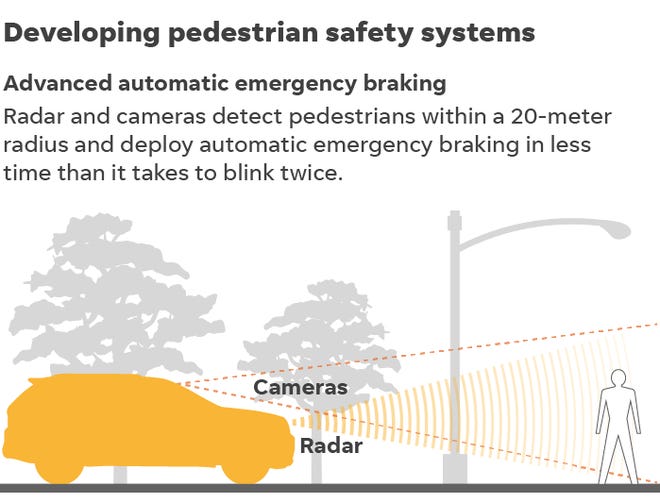The Urgent Need for Pedestrian Safety Technology
The need for advanced technologies to prevent cars from striking people is gaining greater urgency amid heightened awareness of the nation’s pedestrian safety crisis. Automakers and suppliers are developing an array of systems to avert accidents, including safer infotainment systems and crash-avoidance technology, not to mention the far-out solution: self-driving vehicles.
“I don’t recommend too many people watch it, but if you look at a cadaver or a dummy being struck by a vehicle to simulate a real-world crash, it’s dreadful to see what happens,” said Richard Retting, director of safety for Sam Schwartz Consulting. “So a lot of the emphasis needs to be on prevention.”
Crash-Avoidance Technologies
Crash-avoidance technologies are becoming increasingly common, such as lane-departure warning and systems that can accelerate and brake on the highway. About 73-80 percent of new vehicles sold in 2018 are expected to come with some form of crash-avoidance system. However, these systems are largely focused on protecting people inside the vehicle, not outside.

German supplier Bosch has developed a system that uses radar and cameras to detect pedestrians and cyclists within a 20-meter radius and deploy automatic emergency braking. The system is already rolling out in European vehicles, driven by stricter regulatory standards.
Vehicle-to-Infrastructure Communication
Enabling vehicles to communicate with road equipment is envisioned as a key way to promote pedestrian safety. Auto supplier Continental is developing a system that uses short-range wireless communication to transmit signals from above-the-intersection equipment that detects pedestrians.

Advanced Infotainment Systems
Automakers and suppliers are developing augmented-reality systems that would project directions onto the windshield. These systems could ensure that people aren’t taking their eyes off the road.

Improved Headlights
Poor headlight performance is a shortcoming for the automotive industry. Improving headlights could help with pedestrian safety, as about 75 percent of pedestrian fatalities occur at night.

Self-Driving Systems
Fully self-driving systems are being pursued by most major automakers and many tech companies. While they may be able to prevent many pedestrian fatalities, they are not perfect and have a long way to go.

The National Highway Traffic Safety Administration hopes that self-driving cars will play a key role in meeting its ambitious goal of eliminating all road deaths within about three decades. However, a recent deadly crash involving an Uber self-driving car served as a reminder that autonomous vehicle technologies are not yet perfect.



